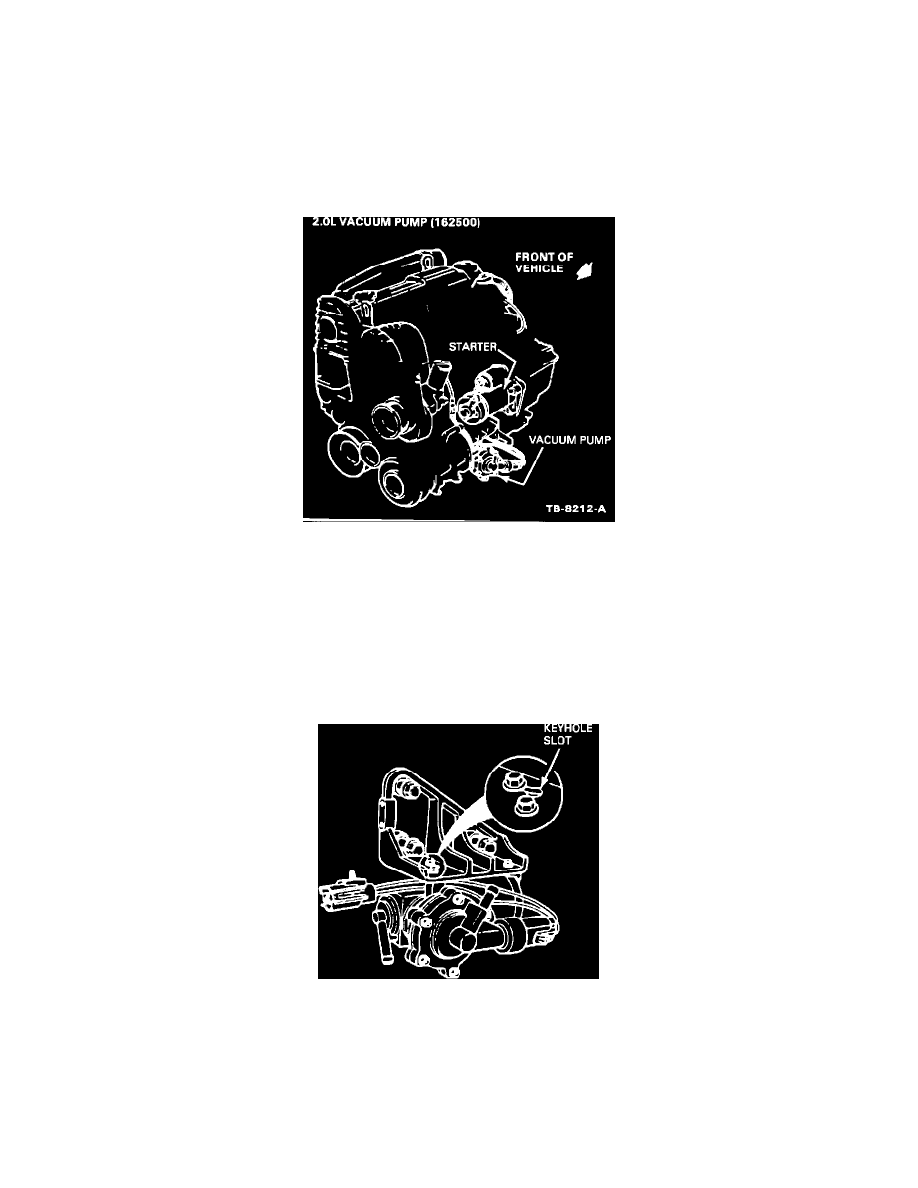Tempo L4-122 2.0L DSL (1984)

Vacuum Pump: Technical Service Bulletins
Vacuum Pump - Shop Manual Diagnosis Procedure
Article No. 85-18-4
VACUUM PUMP (2.0L DIESEL) - SHOP MANUAL DIAGNOSIS PROCEDURE
FORD 1984-85 ESCORT, TEMPO
LINCOLN-MERCURY 1984-85 LYNX, TOPAZ
Figure 4 - 2.0L VACUUM PUMP (162500)
The vacuum pump (Figure 4) used on the 2.0L diesel is located on the lower half of the engine near the starter (radiator side of the engine). It is
electrically operated, running off battery voltage (12 volts), and is designed to turn on at not less than 18 in. Hg (457.2 mm Hg) of vacuum and turn off at
not more than 24 in. Hg (609.6 mm Hg).
NOTE:
These measurements are at sea level. Measurements taken at higher altitudes may be slightly lower.
Checking vacuum pump output is done at the "T" that connects the vacuum pump to the system. It is located under the lower edge of the radiator support
bracket. This is the best place to check the output of the vacuum pump, because it can be isolated. The pump should pull approximately 20 in. Hg (508
mm Hg) of vacuum almost immediately, and then go up to about 24 in. Hg before it
shuts off. It should turn back on at about 18 in. Hg (457.2 mm Hg). Current draw on the pump during operation is approximately 8 amps.
Figure 5 - KEYHOLE SLOT IN VACUUM PUMP MOUNT
Although it looks like the starter must be removed to get the pump off, it is not necessary. This is because of the keyhole slot (Figure 5) in the mounting
bracket of the pump. To get the pump off the engine, follow the procedure described below:
1.
Disconnect the vacuum output and exhaust line and the electrical connector.
2.
Remove the two front bolts holding the vacuum pump.
3.
Loosen the rear bolt.
